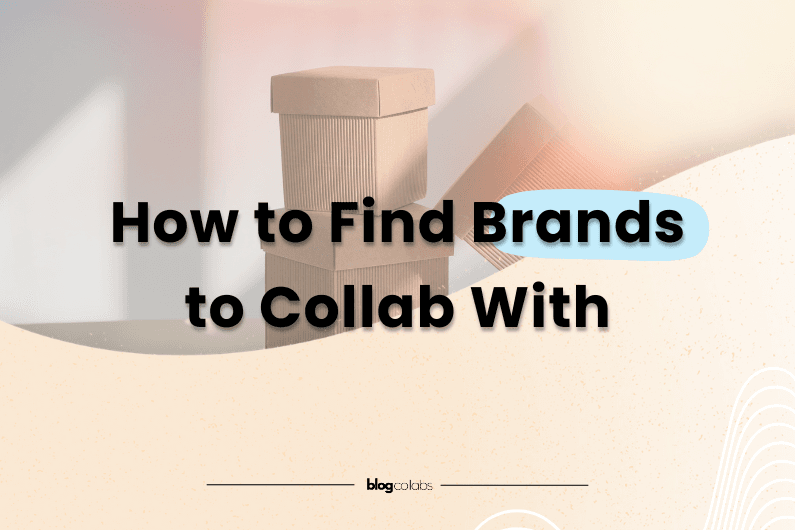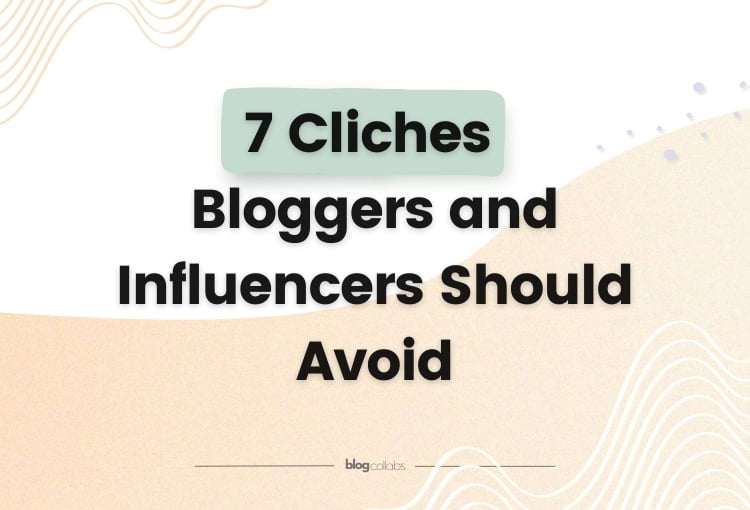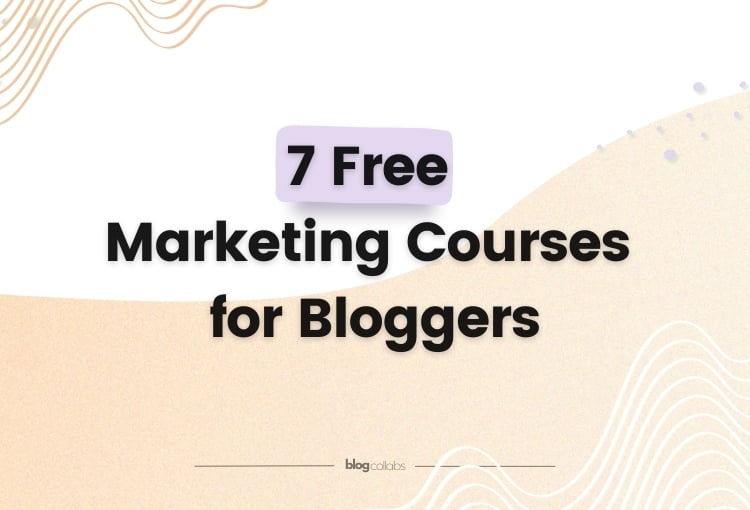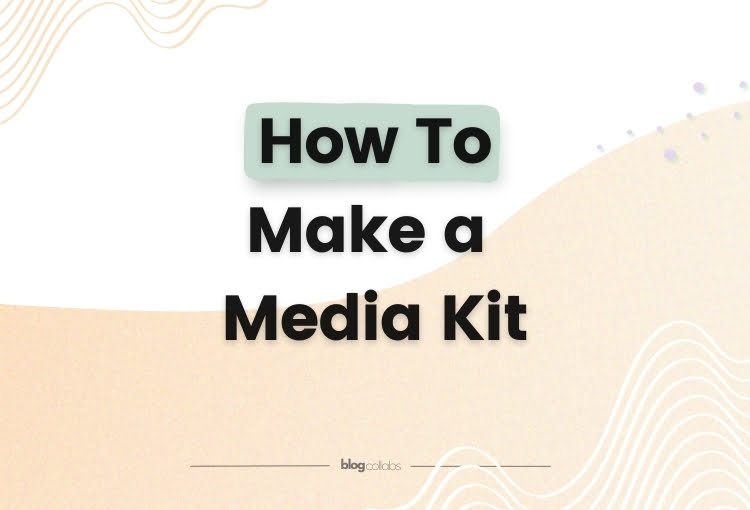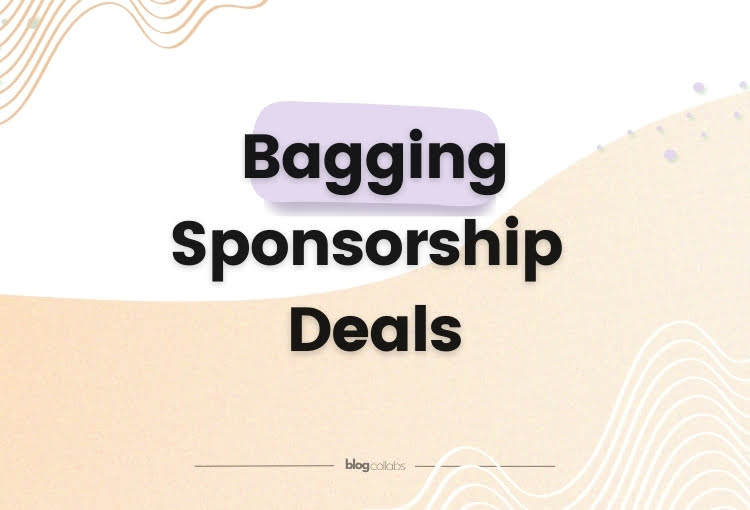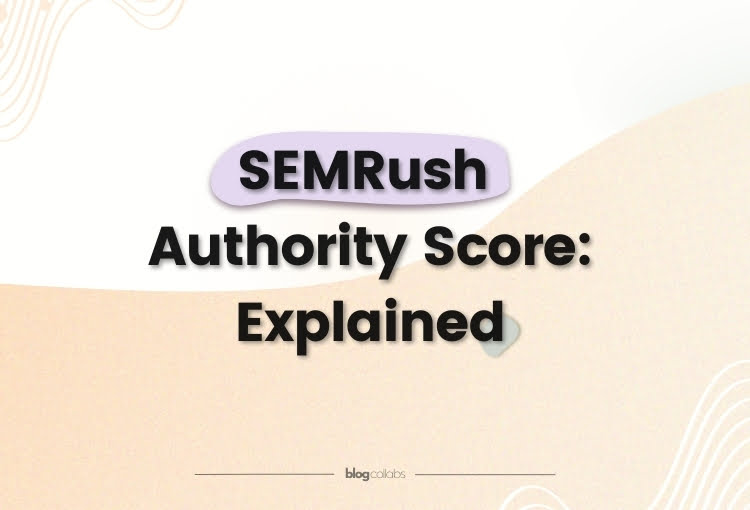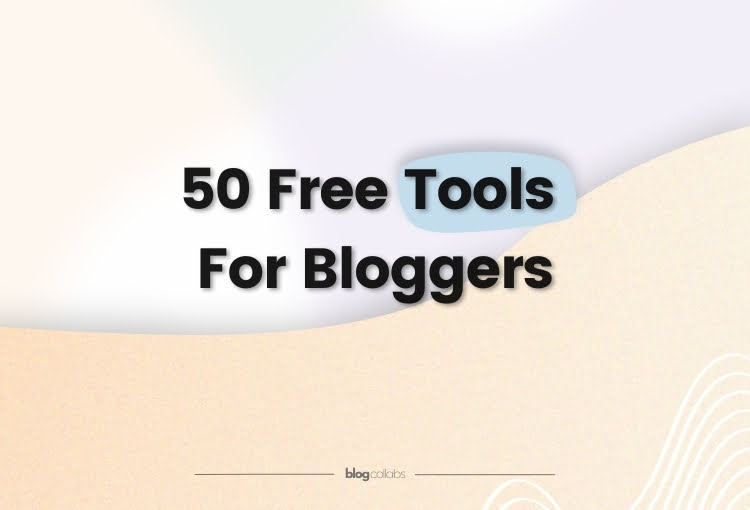How to Find Brands to Collab With
I don’t know about you but, as a creator, knowing how to find brands that may be open to collaborations is one of the most daunting challenges of all.
On the other hand, I’ve seen plenty of creators land brand partnerships despite boasting less talent than the early-round contestants on Britain’s Got Talent. So, clearly, collaboration deals are achievable.
It takes time to find brands to collab with, which can pose a distraction from blogging and creating content. I also know from personal experience that rejections are more common than agreements, even when the collaboration feels like a perfect fit.
I can also confirm that the time and effort lost to researching brands can harm a blogger’s relationship with the content creation process while also raising serious doubts about whether it is a career path that can truly deliver sustained success.
With the right approach, though, it is possible to find brands to collaborate with. In this guide, I will teach you how to do it more effectively – thus leading to more profitable partnerships while also giving you more time to focus on content creation.
How to Find Brands to Collab With
There are brands willing to collaborate with content creators in virtually every industry and geographic location. Before looking anywhere else, I should let you know that influencer marketing agencies are an option. Still, it isn’t the best choice for most influencers outside of the Mega category (1 million or more followers).
No two creators are the same and may have different goals, schedules, and niches. Nevertheless, I find that most can find brands to collaborate with in the following spaces;
Influencer marketing platforms
Rather than connecting with brands through an agency, it is now possible to reach companies and decision-makers directly through a dedicated platform like Blog Collabs. The brands found in this environment are actively looking for creators, making them far more open to conversations and proposals. In fact, many brands will often post briefs of what they are looking for while welcoming applications from interested creators and bloggers.
Networking opportunities
It’s an old cliche, but it’s often who you know that counts more than what you know. I, like most people reading this, have witnessed this in both my personal and professional life. Putting existing relationships to good use can be one of the most effective ways to win new brand deals. Consciously growing my network through local industry events and online platforms alike has opened the door to many opportunities over the years. I can’t stress its importance enough.
Direct outreach
If there’s one thing I’ve learnt in business, it’s that opportunities won’t fall into your lap. A proactive approach to making things happen is essential, especially when working in the digital arena. There are over 5.5 million businesses in the UK alone. So, it’s almost certain that there are collab opportunities for every creator, regardless of niche or current audience size. With the right outreach strategy in place, sponsorships can be secured.
Finding Brands to Work With on Instagram
Brand-creator partnerships can see the blogger produce content across a wide range of online and offline channels. Nevertheless, I would encourage all creators to target Instagram. It is, after all, the most commonly used platform (87% of influencers prefer it) for this purpose. Here’s why;
- Access to an audience of over 2 billion active users.
- A visual focus that enables creators to engage users right away.
- Built-in collaboration features help content reach the shared audience of both parties.
- Branded content labels make it easier for all parties to be compliant and transparent.
- Links to product pages or Instagram shops make it easy to direct users with a CTA.
- Collab content is amplified, thus leading to organic traffic for cost-effective marketing.
- Instagram influencer recommendations are trusted by 69% of consumers.
- Content posted on Instagram can be easily monitored and republished elsewhere.
Instagram is also a fantastic platform for influencers and content creators to target because, unlike other channels, it offers a chance for micro-influencers in niche industries to engage users. In turn, this lays the foundation for higher earnings.
I think, more importantly, knowing how to find brands to work with on Instagram is so easy that anyone (except my nan and grandad) could do it. In fact, it’s as easy as 1-2-3.
Step 1: Join the Instagram Creator marketplace
Signing up for the Instagram Creator marketplace is very simple;
- From your profile, navigate to account type and tools and follow the prompts to complete the switch to professional account.
- From your professional dashboard, navigate to branded content tools and join creator marketplace. You will need to accept the terms and conditions.
Step 2: Find relevant brands
To find brands through the Instagram Creator platform, simply;
- Hit the menu in the top right of your profile, and navigate to branded content.
- Click the preferred brand partners tab and click the brands that you would be happy to collaborate with on Instagram.
Step 3: Connect
After completing the two steps above, connections could be made by;
- Waiting for brands to contact you. All creatives that have selected the brand will show on a list seen from their dashboard.
- Send a message directly to the brand. I personally would not use this option unless there have been previous interactions with the company’s Insta profile.
Strategies to Identify Potential Brand Collaborations
Knowing how to find brands to work with on Instagram or other platforms is a good starting point. Still, approaching brands that have no interest in working with you is almost as embarrassing as triple-texting your ex after three months of no contact. I imagine…
If I were to make a shortlist of brands to work with, here’s how I would do it:
Focus on relevant brands I already know
One of the reasons that many consumers trust influencers is that they create authentic content. While genuine first-time responses to new products and services through ideas like unboxing videos are great for engagement, it certainly helps to have familiarity with the brand. Better still, a genuine love of the company’s offerings will shine through in any branded content.
I also find that I am very much a member of my own target audience. So, if I respond well to a brand, there’s a good chance that my audience will too.
Look for existing audience overlaps
Building on the idea that my audience will respond well to many of the brands that I love, audience overlaps are another key factor to consider. If you are already targeting users from the same demographic background, it’s likely that they will be highly engaged with collaborative campaigns. This works for brand partnerships as well as brand-creator links.
Audience data can be checked via website CMS data analytics or social media dashboard. Targeting brands that actively target the same audience should yield better results.
Research other creators to find brands to collab with
As already said, I’ve seen many creators that have brand partnerships. While some produce excellent content, others aren’t quite so prolific. If brands are already working with creators in my field, including individuals who produce worse content than mine, they could be a good target. Creators will reveal their sponsorships in their bios, which makes research easy.
Another tactic is to monitor partnerships between brands and other creators. When one partnership ends, for whatever reason, the brand could be open to launching another.
How to Secure Brand Sponsorships
Brand partnerships can also manifest as sponsorships. This often involves a brand sponsoring an influencer by providing relevant products, as well as money, in return for brand exposure. GymShark has been one of the biggest pioneers of this approach in the digital space courtesy of its athlete sponsorship program. Knowing how to find brands can be a challenge, but can transform an influencer’s life.
Sponsorships work particularly well as they essentially allow content creators to continue being themselves, only with the financial backing to do more. A lot of companies sponsor individuals that they want to associate with, especially when the creator can bring new eyes to the business or provide engaging insights into products and services.
Here are the steps I suggest to anyone seeking brand sponsorship opportunities;
- Grow an authentic audience with a clearly defined position in the marketplace. Remember, a small yet defined and engaged audience is often better than a large one that lacks direction.
- Price sponsorships correctly. Most creatives are sponsored by just a single company or have a single sponsor for each of their platforms – video series, blog, podcast, etc. It’s important to maximise revenue without turning brands off.
- Find brands that are a good fit. I don’t only look for companies with a similar audience. I look for brands that sell products and services that could actively benefit me – and subsequently appeal to my audience.
- Actively give brands a reason to care. If a brand is invested in a creator from an emotional viewpoint, they’re more likely to invest financially too. I truly believe consistency and tapping into your USP is the key to success.
- Prepare a request pack and be confident enough to approach brands. I use mine to show I’ve researched their brands, my value proposition, and ideas that I have to paint their brand in a positive light through authentic content.
Finally, even with these features in place, rejection is inevitable. Developing a thick skin wasn’t something that came easily to me, but it certainly took my career to the next level. Anyone looking to succeed in this environment must do the same.
Who to Approach for Sponsorships
While I cannot highlight the importance of working on the personal brand enough, it’s also necessary to approach the right brands and people. Whether considering how to find brands to work with on Instagram or any other platform, the “who” is as vital as the “how”.
Sponsorships are a very specific type of brand-creator partnership, which must be respected. The first thing I do before approaching anyone is make a shortlist, using the following questions for guidance;
- Does the brand actively sponsor creators?
- Do I fit the profile of creator that they typically sponsor?
- Are the brand’s values aligned with my own?
- Do we share an audience overlap?
- Does the company give creatives freedom to work with other brands?
After compiling a list of brands to approach, the next step is to initiate contact with the right person. If the company is available to support ambassadors and affiliates on an influencer platform, contact can be made here. As previously stated, though, I’d tend to do this after initiating contact elsewhere – such as through public social media interactions.
It is worth sending a speculative DM on the chosen platform, although I will say that messages can often go unread. Some brands will have a dedicated contact form for individuals seeking sponsorships. Always check online for this.
Alternatively, looking for the brand’s decision-makers in the fields of influencer marketing on LinkedIn or professional networking platforms is an option. Or if the brand uses an agency, reaching out to them with your sponsorship request could gain a quicker response.
Crafting the Perfect Sponsorship Request
As a content creator who often has an informal tone of voice, maintaining a professional approach doesn’t always come naturally. However, most organisations are only happy to do business with creators that show professionalism and attention to detail – irrespective of their public persona. Preparing a clear, concise, and calculated sponsorship request is essential.
When I first started approaching brands, I largely focused on trying to oversell myself as the biggest and best creator. In hindsight, that is the wrong route. Big brands could easily establish partnerships with the most recognisable faces on the planet if they wanted to. As a creator, then, the goal is to show that you are a good fit.
To do this, a sponsorship request should;
- Show that there is an understanding of the brand. I do this by commenting on one of their recent marketing campaigns that I love. A little research into the brand’s current objectives, such as a clear focus on reaching a new audience, can make a big impact.
- Highlight how there is a good fit for the brand persona. I achieve this by using data to prove the audience overlap while also underlining my position within their target market. It is a way to show that I can represent their business as an extension of their brand.
- Introduce them to the style of content and how it can resonate with their audience. I do this by showing off previous campaigns, supported by data metrics that prove engagement as well as an authentic alignment with their brand values.
- Focus on the benefits offered to them. I usually find that brands seek brand exposure and added engagement more than sales. So, highlighting how I can introduce new yet relevant leads to their business is usually a very successful route to success.
- Pitch some rough ideas for campaigns. I personally give a little insight rather than detailed content as it can pique their interest and show my creativity without giving too much away. It can be a very good way to get the brand excited about the prospect.
- Suggest possible ways that the sponsorship can lead them into new spaces. If a brand has not yet used tutorials, live streams, or podcasts within their marketing strategy, I’ll focus on these. It allows the brand to hit its audience from multiple directions.
Above all else, every pitch should be personalised to the brand. Showing an authentic desire to work with the brand, along with clear ideas of how the sponsorship can be developed to deliver tangible benefits, will work well.
Top Tip: I also like to offer different levels of sponsorship at different price points to make the brand feel like they have even greater control.
Tips for Successful Brand Collaboration
I get it, reaching an agreement for a brand collaboration feels like a huge success. It is. But the dream can quickly turn to a nightmare if you fail to keep the company happy. The way in which partnerships are made often gives the brand freedom to pull out whenever they see fit. As a creator, the goal is to ensure they won’t have a reason to. Here’s how:
Highlight the benefits for them
Most brands appreciate what an effective collaboration has to offer them and will be equipped with details like the fact that over 70% of consumers react positively to brand collaborations. Still, I always think it is a good idea to frame the deal as one that serves their best interests.
Aside from emphasising the ROIs and effectiveness of this marketing endeavour, it shows an understanding of purpose. When a brand can see that a creator wants to drive sales and brand awareness on behalf of their company, their response will stay positive.
Focus on quality over quantity
There are no limits on how many brands a creator can collaborate with at any given time. Nevertheless, many brands may worry that an individual cannot give the company the desired level of attention when they work with too many brands at once.
I have certainly fallen into the trap of trying to work with too many brands in the past. Learn from my mistake: it is far better to have a small selection of well-paid deals that fit your brand image as a creator than to lose your authenticity (and audience) due to excessive partnerships.
Go the extra mile
Consumers love to feel that they are getting value for money, and brands do too. The industry’s global value is set to surpass $30bn this year, up from $10bn in 2020. So, businesses are happy to pay for partnerships, but only when creators deliver.
I find that, by working with brands I genuinely love, it is far easier to reference them organically away from the campaigns themselves. It gives the brand something extra for free while my audience can see that recommendations are authentic. Innovating with new ideas is also key.
Move into new campaign styles
As a content creator, it’s not enough to engage an audience. You must hold their attention. For brands, co-branded products are a great option. As a creator, I personally find that working with a brand to launch a product is very rewarding. And it cements your presence with the brand.
Posting #gifted content and an affiliate discount have their place but can feel repetitive quite quickly. Giveaways, sponsored podcasts, blogs, and behind-the-scenes content keep the partnership fresh. It yields better content, improved metrics, and higher ROIS for the brand.
Ultimately, a personalised approach that highlights the mutual benefits on offer from a partnership should deliver optimised conversions. But I appreciate that knowing who to reach out to, or how to initiate contact, can be tough.
Thankfully, Blog Collabs provides instant access to over 200 brands actively welcoming requests. Discover them today, or even have companies approach you, by signing up today!
